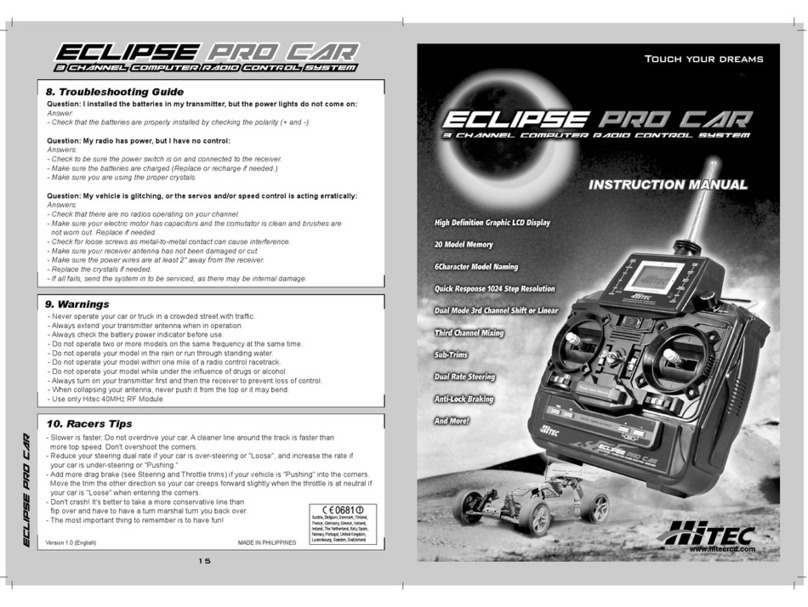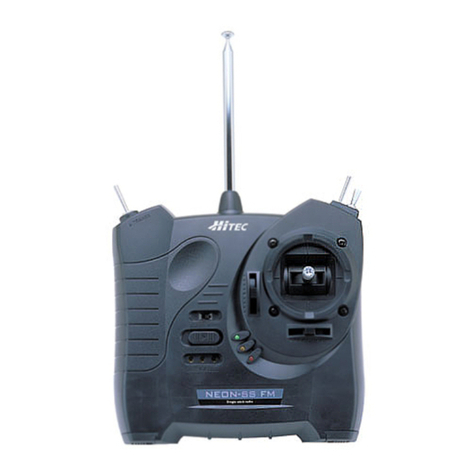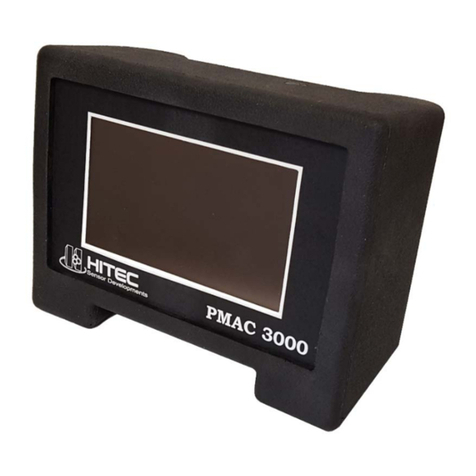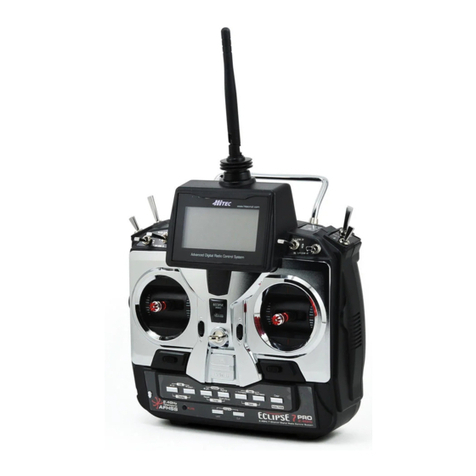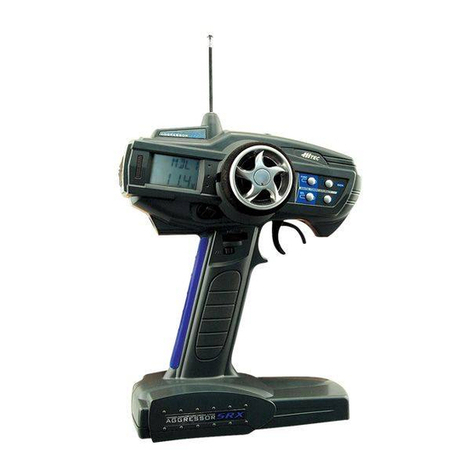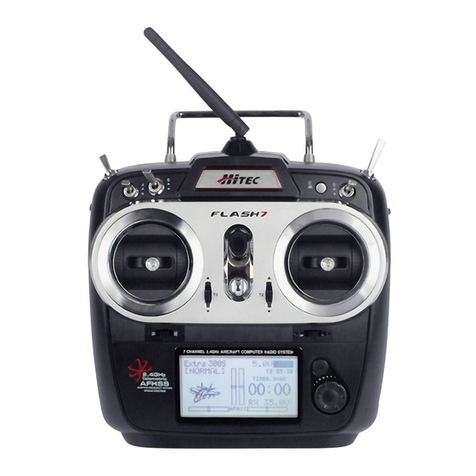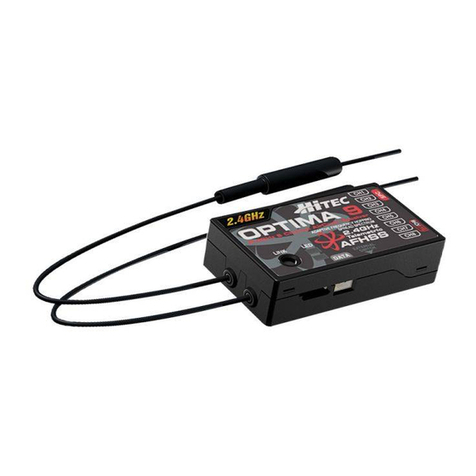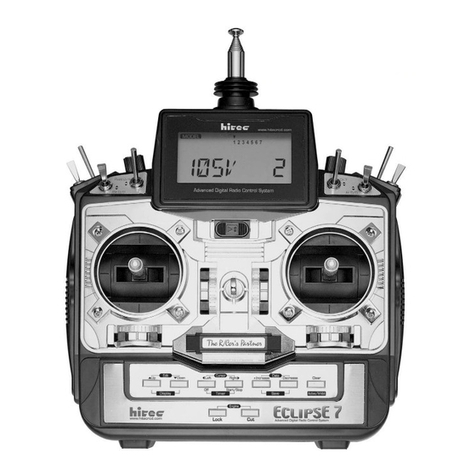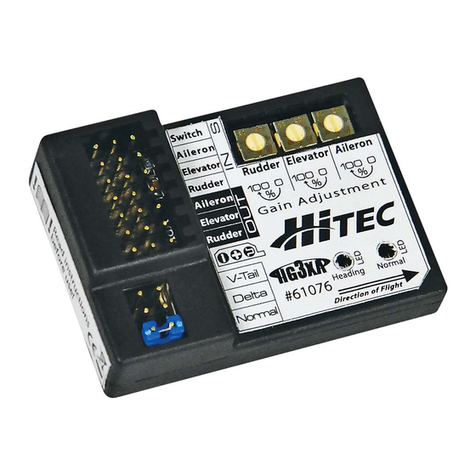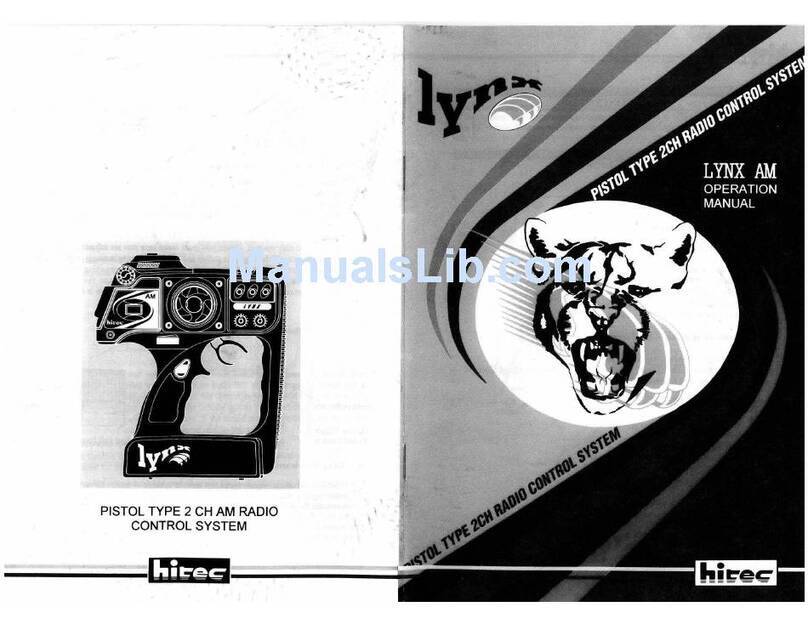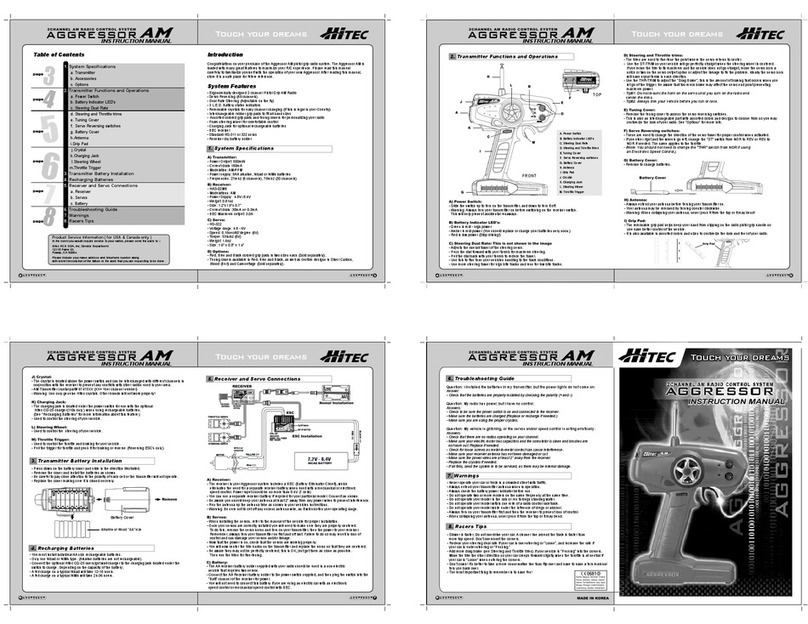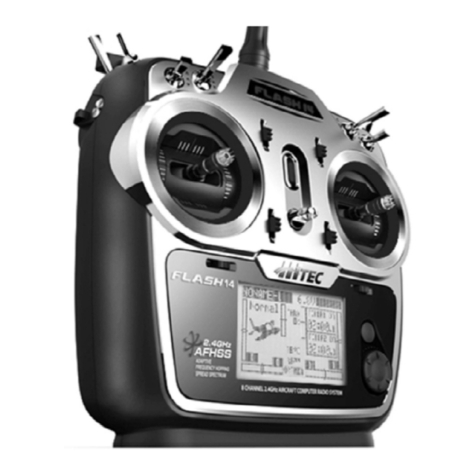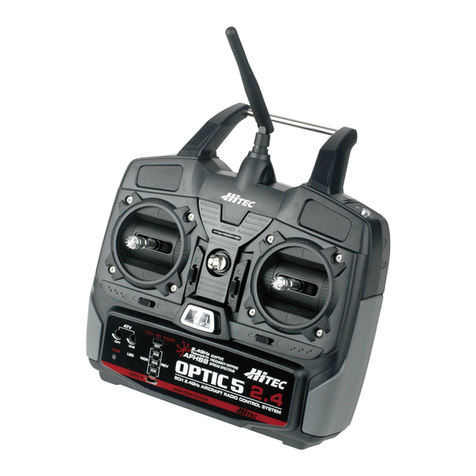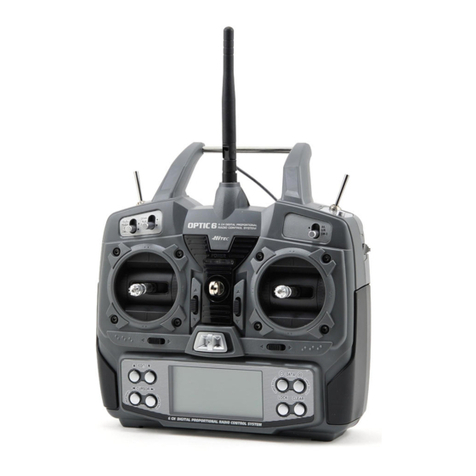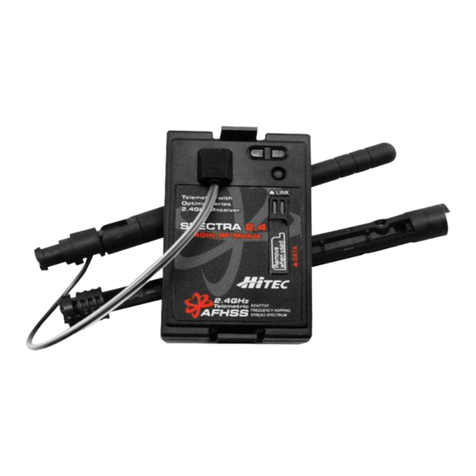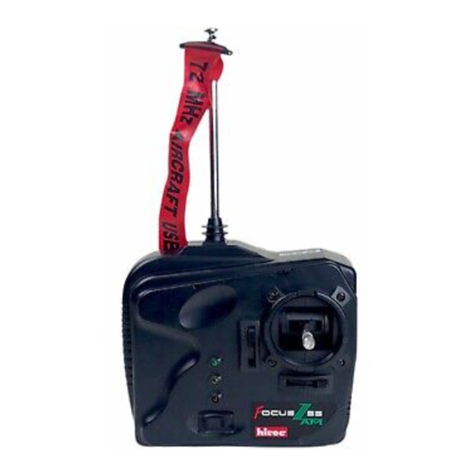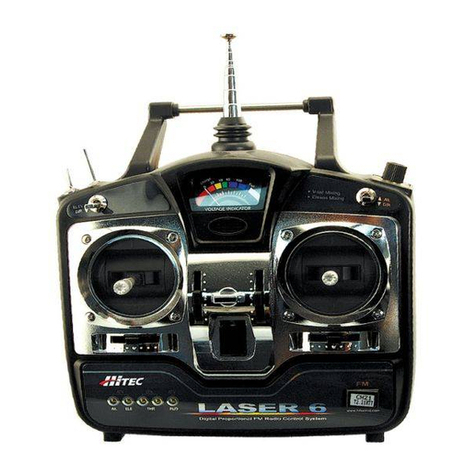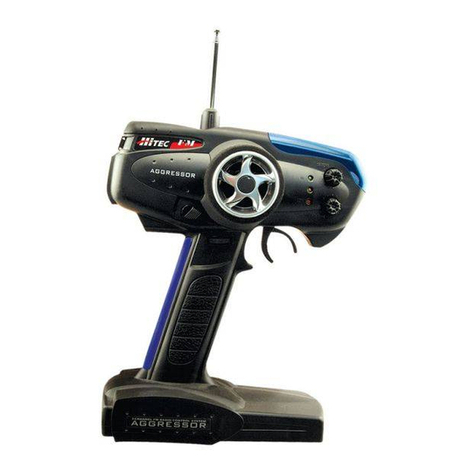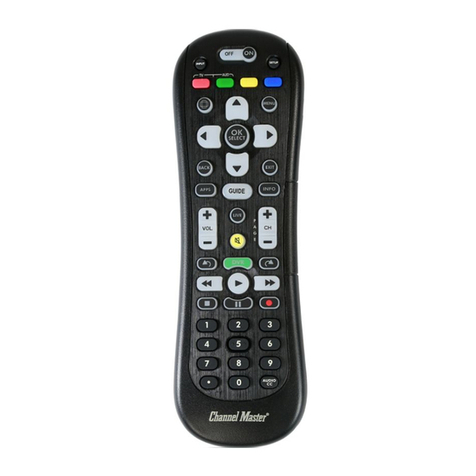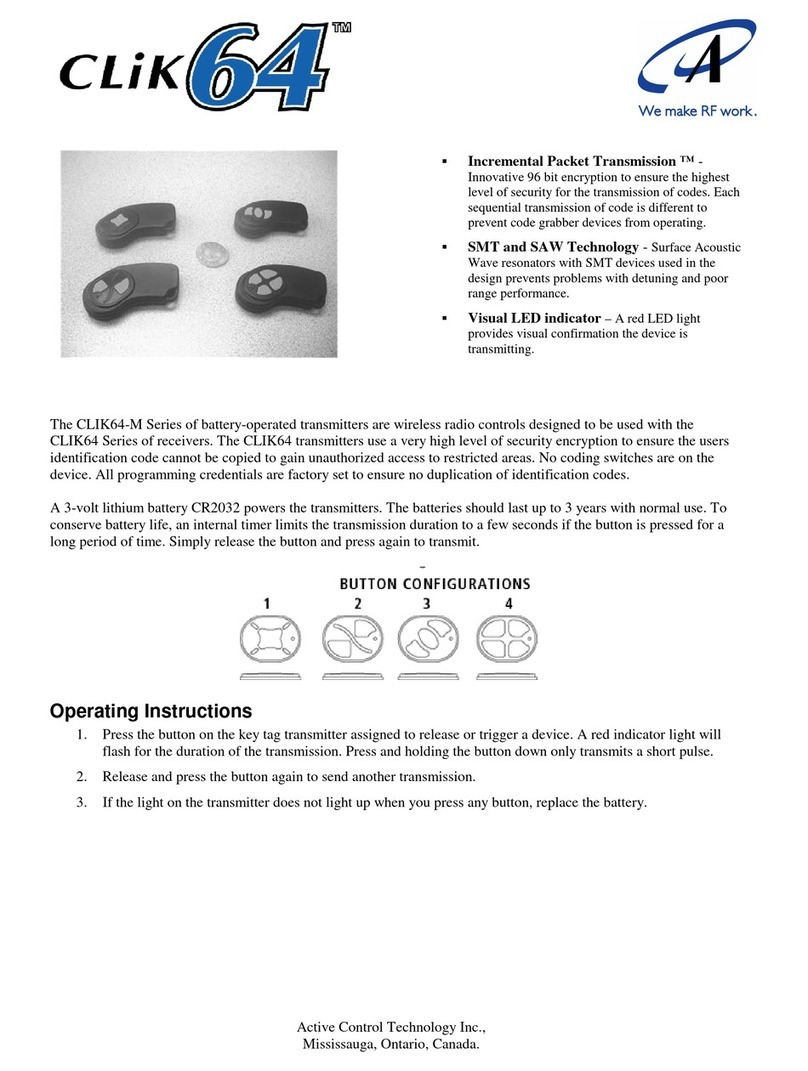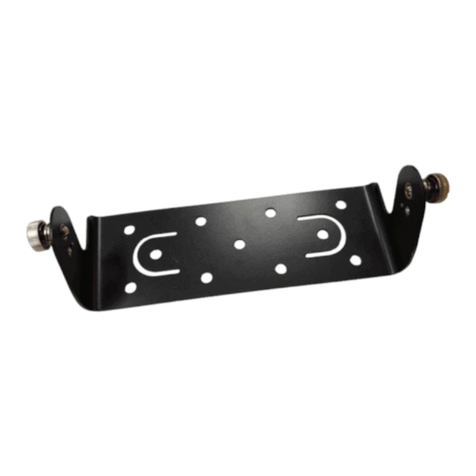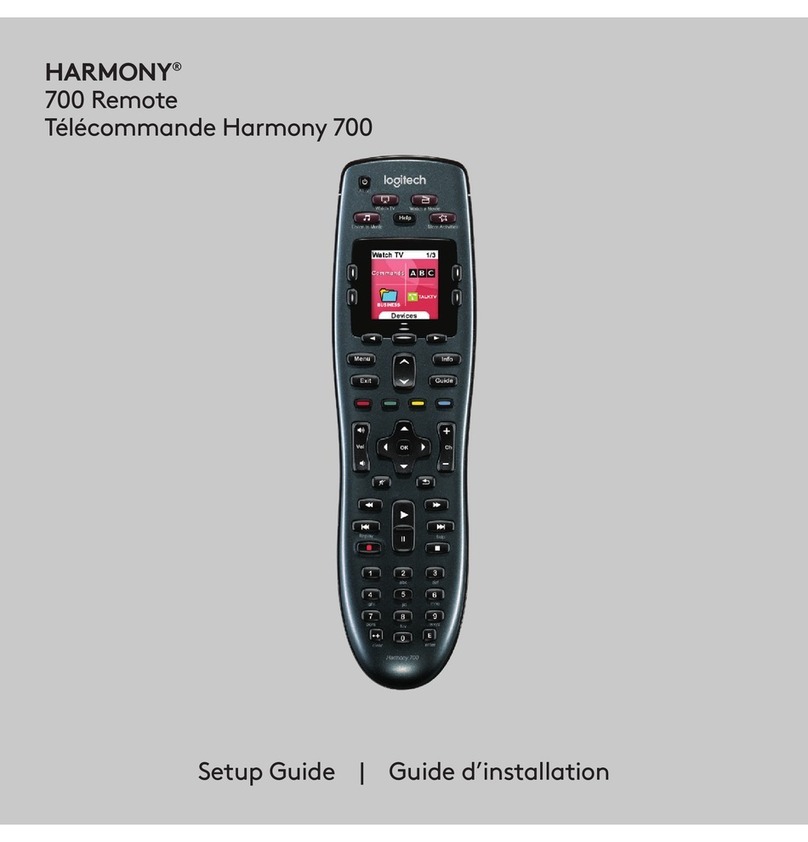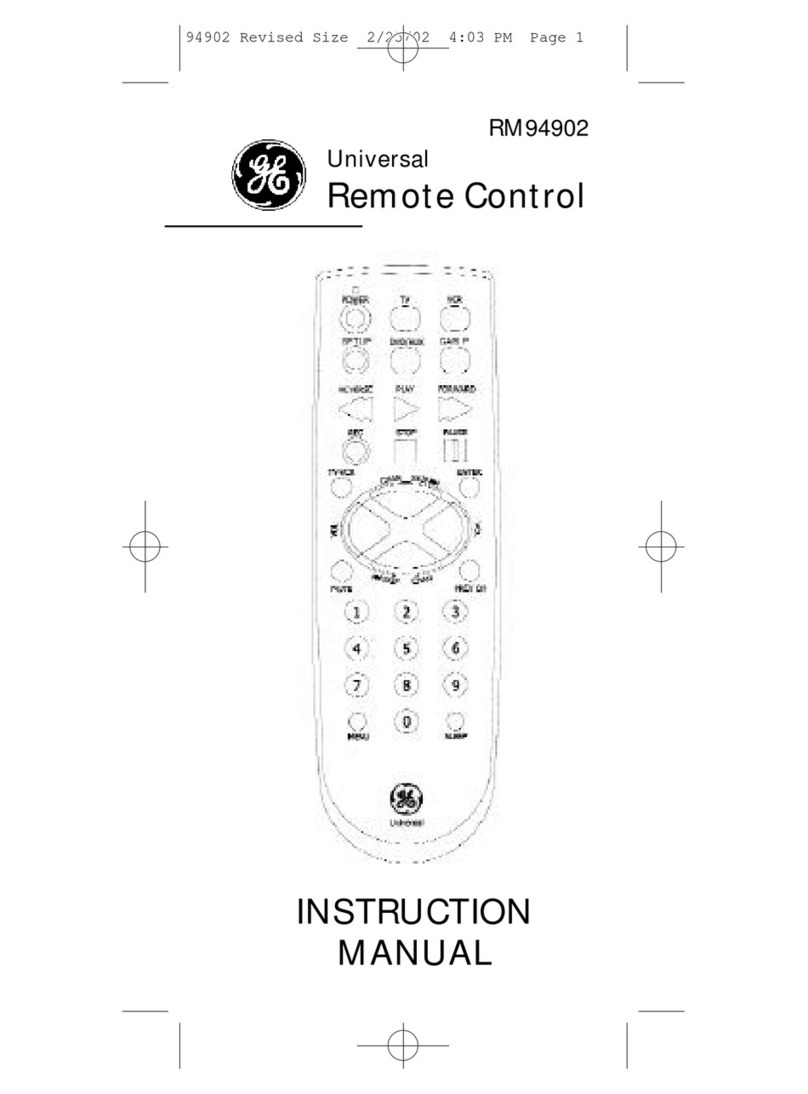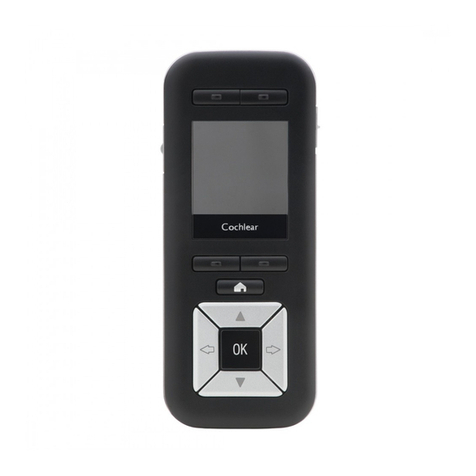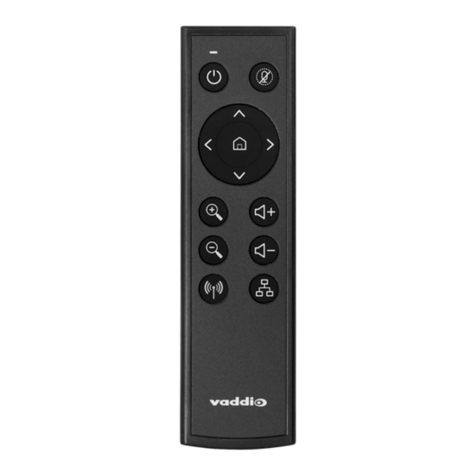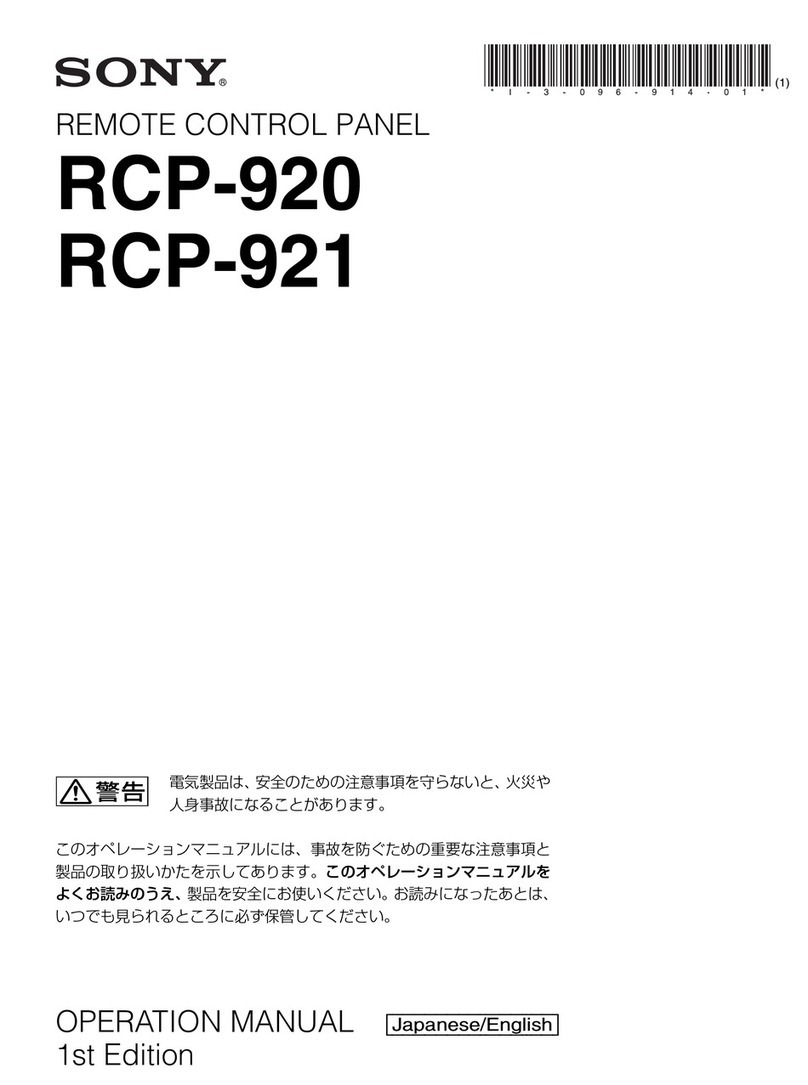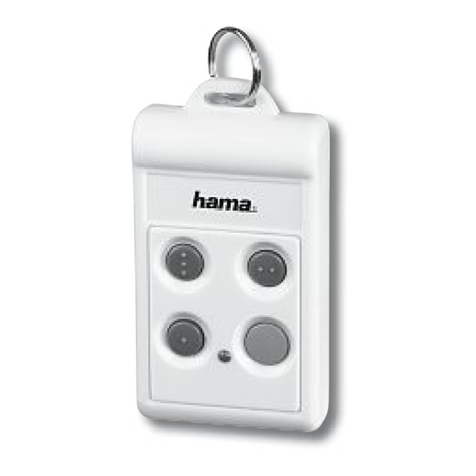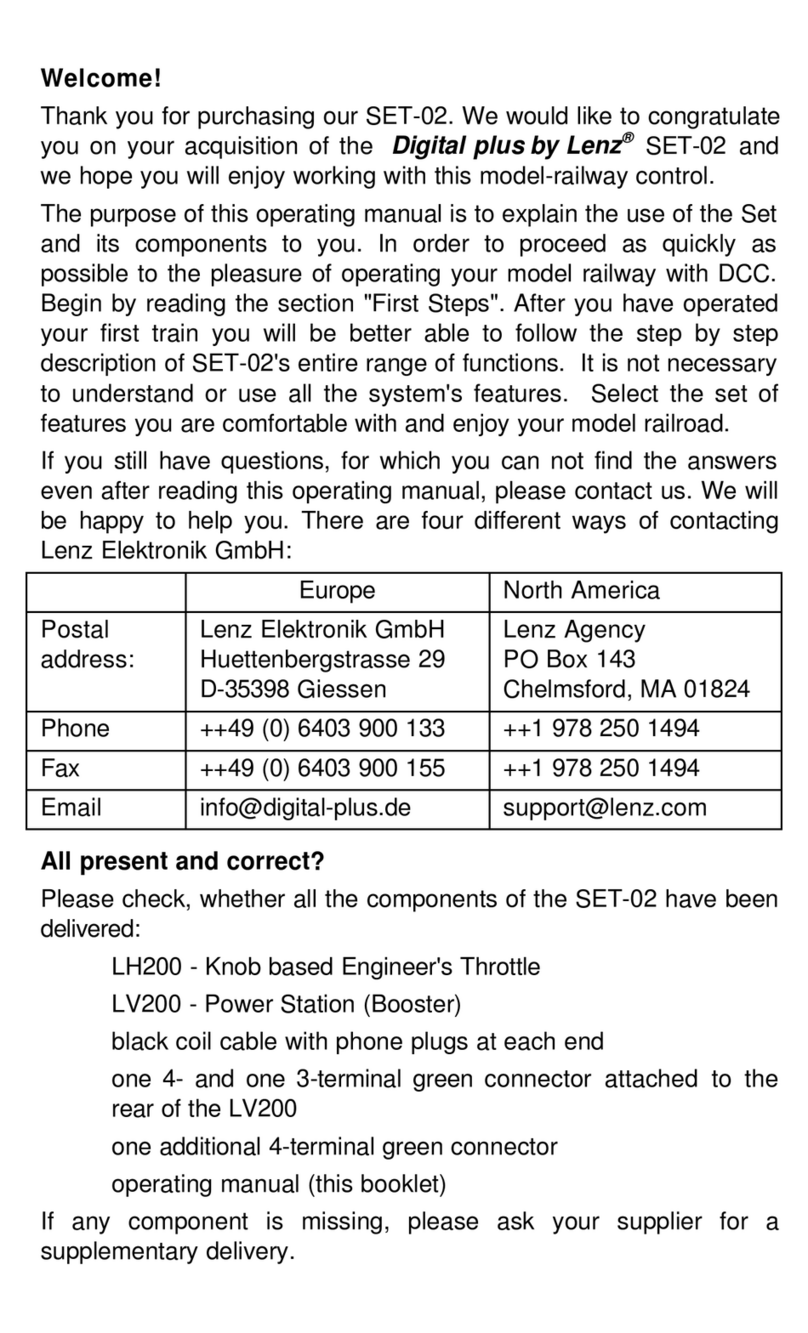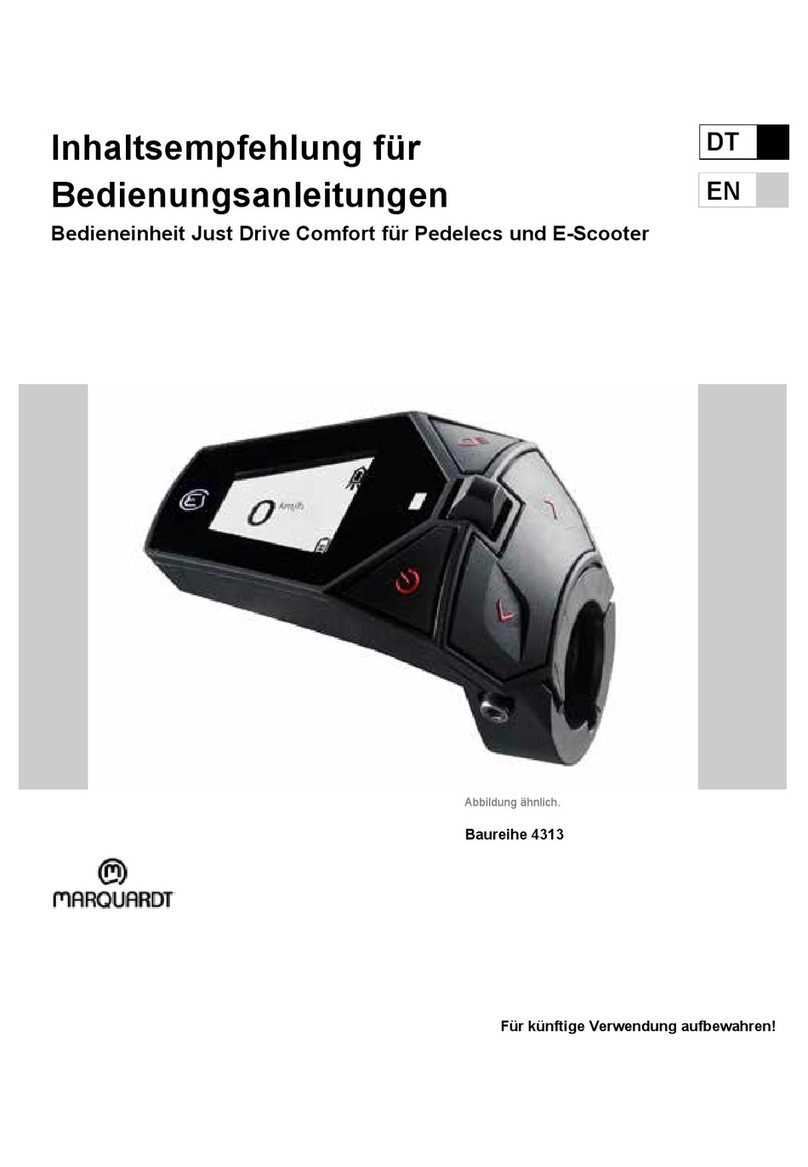Optic 6 Sport
- Page 6
Optic 6 Sport
- Page 7
Be careful if you do choose to use a field charger on your batteries.
A fast-charger may overcharge the batteries, causing overheating
and a premature failure. Never charge your transmitter or receiver
battery at a rate higher than the batteries capacity.
For example, the capacity of your Optic 6 Sport's 7.2 volt
NIMH battery is 1300 mAh and should therefore not be charged at
a rate any higher than 1.3 amps.
Important!: Quit flying when your transmitter battery level
reaches 6.6 volts-the radio will emit a steady series of beeps to
remind you!
NOTE: If you need to remove or replace the transmitter battery, do not pull
on its wires to remove it. Instead, gently pull on the connector's plastic
housing where it plugs in to the transmitter. The battery must be removed
to charge it properly with a "peak" charger.
Charge the Batteries!
ㅁTry to charge the batteries with the charger supplied with your system
exclusively. The use of a fast-charger may damage the batteries by
overheating and dramatically reduce their lifetime.
Before we dive into the programming and use of the Optic Sport,
let's charge the batteries.
1. Connect the transmitter charging cord to the transmitter's
charging socket (on the rear of the case, left side).
2. If your aircraft uses a receiver battery, connect it to the
receiver connector on the charging cord.
3. Plug the charger into a wall socket.
4. The charger's LEDs should light, indicating charging current
is flowing..
If either light does not turn on, verify that the transmitter and
receiver power switches are OFF.
The batteries should be left on charge for about 15 hours.
A training cable may be used to help a beginning pilot learn to fly
safer by allowing a second transmitter, operated by an experienced
instructor, to be connected to the Optic 6 Sport transmitter.
The instructor may override the beginner at any time to bring the
model back under safe control. For training, the transmitter may be
connected to another Hitec FM system using the Hitec cord
part No. #58320 TRAINER CABLE (between 6 cell transmitter
battery systems) or #58321 TRAINER CABLE FULL PACKAGE
(#58320 + Slave DIN + Master DIN) - For use between a 6 cell
transmitter battery system and 8 cell transmitter battery system.
NOTE:
1. WHEN USING THE TRAINER SYSTEM IN THE STEREO JACK TO STEREO
JACK FORMAT AS NOTED IN THE NEXT SEVERAL PARAGRAPHS,
BOTH TRANSMITTERS ARE GOING TO TRANSMIT.
2. IF THE SLAVE TRANSMITTER HAS A REMOVABLE MODULE, REMOVE IT.
THEN, IT WILL NOT BE TRANSMITTING. OTHERWISE, IF YOU ARE
FLYING AT A CLUB FIELD USING FREQUENCY CONTROL, BE SURE
YOU HAVE THE OK TO USE BOTH FREQUENCIES.
3. IF THERE IS NO REMOVABLE MODULE ON THE SLAVE TRANSMITTER,
BOTH TRANSMITTERS MUST BE ON DIFFERENT FREQUENCIES.
4.
Between the Transmitter having a DIN jack as INSTRUCTOR
and a Transmitter having a STEREO jack as STUDENT.
1) Connect the INSTRUCTOR or DIN Jack adapter marker "Master"
with #58320 stereo jack Trainer cable.
2) Power on the INSTRUCTOR transmitter.
3) Plug the combined trainer cable into the INSTRUCTOR transmitter
DIN jack connection.
4) The STUDENT transmitter should be turned off.
5) Plug the trainer cable into the STUDENT transmitter with the
stereo jack. The power to the STUDENT transmitter will turn on
automatically and you will see "SLV MODE" on the LCD screen
which means the transmitter is recognized as STUDENT or "Slave".
6) Though the STUDENT transmitter is powered on automatically,
it will not transmit a radio signal as long as the trainer cable is
connected properly.
NOTE :
There is no sign of recognition on the LCD screen of the Transmitter using
the DIN jack.
NOTE
1) Do NOT turn on the power of the STUDENT transmitter having the
STEREO Jack. Once you plug the trainer cable into the STUDENT
Transmitter using the STEREO Jack, it will be powered on automatically.
2) All Transmitters in the trainer system use their own batteries.
Both batteries in both the Instructor and Student Transmitters should be
properly charged and installed when flying in the trainer mode.
3) You may wish to use a simple "contractors cord" knot on the cable to
adaptor connection to keep it from coming "unplugged" when using it.
Heat shrink tubing or electrical tape can also be used.
Most Hitec transmitters use a DIN Jack connector for the trainer
system cable. The Optic 6 Sport is the first of Hitec's transmitters to
use a stereo jack connector.
Please read the following instruction carefully for using transmitters
with DIN Jack and/or stereo jack for the trainer system.
You will need the Trainer cable full package (#58321).
This full package is consists of a STEREO Jack trainer cable(#58320),
Instructor DIN Jack and Student DIN Jack Adapter.
This package allows the proper connection between a 6 cell battery
system radio (ex. Optic 6 Sport) and 8 cell battery system radios
(ex. Optic 6 / Eclipse 7 / Laser 4 & 6).
NOTE
This section tells you how to connect the transmitters only.
Please read the prior sections for the full information needed to properly
operate the trainer cable system.
3. Between the Transmitter having a STEREO jack as
INSTRUCTOR and Transmitter having DIN jack as STUDENT.
1) Power on the INSTRUCTORS Transmitter having the STEREO Jack
.
2) Plug the STEREO Jack trainer cable (#58320) into the Master,
or INSTRUCTORS transmitter . Note you will see "MAS MODE"
on LCD screen which means the transmitter is recognized as
the INSTRUCTOR or "Master".
3) Connect the DIN Jack adapter marked "STUDENT" from the
cable package #58320 to the other end of the stereo connector
cable. This combination enables you to connect the cable to the
STUDENT transmitter with a DIN Jack connector.
4) Plug the DIN connector into the socket on the STUDENT transmitter.
5) Finally, power on the STUDENT transmitter.
Though it is powered on, the STUDENT transmitter will not
transmit the radio signal as long as the trainer cable is connected
properly.
2) Collapse the student's antenna, and fully extend the instructor's
antenna. If the student's transmitter has a removable RF module,
remove if from the transmitter.
3) Turn on the instructor's transmitter and DO NOT turn on the
student's transmitter power.
Plug Trainer Cord (#58320 Stereo Jack) accordingly into each
transmitter. The trainer jack is on the back of the transmitter.
Then you can see "MAS MODE" on the LCD screen of Instructor's
transmitter and "SLV MODE" on the Student's transmitter screen.
4) Move the controls on the instructor's transmitter, and verify each
control moves the proper direction. Now verify that the student's
trims and control travels match the instructor's by using the
trainer button (the momentary ENG CUT/TRAINER button on
the top right of the transmitter case) and switching on and off
while leaving the control sticks and trims alone, then moving
the control sticks.
5) The instructor's transmitter has normal control over the model
unless the trainer button is pressed, passing control to the
student's transmitter. If the student loses control, the instructor
can quickly "take over" by releasing the trainer button and then
controlling the model.
2. To use the trainer system between a STEREO Jack Transmitter
and a DIN Jack Transmitter.
(Needs trainer cable package #58321 between 6 cell Battery Radio
and 8 cell Battery Radio system)
1. To use the trainer system between STEREO Jack Transmitter
and STEREO Jack Transmitter
(Needs #58320 between 6 cell Battery Radios)
1) Set up both the student's and instructor's transmitter to have
identical trim and control motions. If the instructor's transmitter is
on a different frequency than the student's, use the student's
transmitter as the master transmitter, and the other transmitter
as the student's.
Operating with a Trainer Cord
Operating with a Trainer Cord
Stick Length Adjustment
You may change the length of the control sticks to make your
transmitter more comfortable to hold and operate.
To lengthen or shorten your transmitter's sticks, first unlock the
stick tip by holding locking piece B and turning stick tip A
counterclockwise. Next, move the locking piece B up or down
(to lengthen or shorten). When the length feels comfortable,
lock the position by turning locking piece B counterclockwise.
A B
Stick Length Adjustment
CHARGING TRAINER
Stick Lever Tension Adjustment
You may adjust the stick tension of your sticks to provide the
"feel" that you like for flying. To adjust your springs, you'll have
to remove the rear case of the transmitter. Using a screwdriver,
remove the six screws that hold the transmitter's rear cover into
position, and put them in a safe place. Unscrew the antenna and
set it aside. Now, place some padding under the front of the
transmitter and set it face-down on the pad. Gently ease off the
transmitter's rear cover. Now you'll see the view shown.
Using a small cross-point screwdriver, rotate the adjusting screw
for each stick for the desired spring tension.
The tension increases when the adjusting screw is turned
clockwise, and decreases for counterclockwise motion.
When you are satisfied with the spring tensions, you may close
the transmitter. Very carefully reinstall the rear cover.
When the cover is properly in place, tighten the six screws.
Stick Lever Tension Adjustment / Mode Change




















